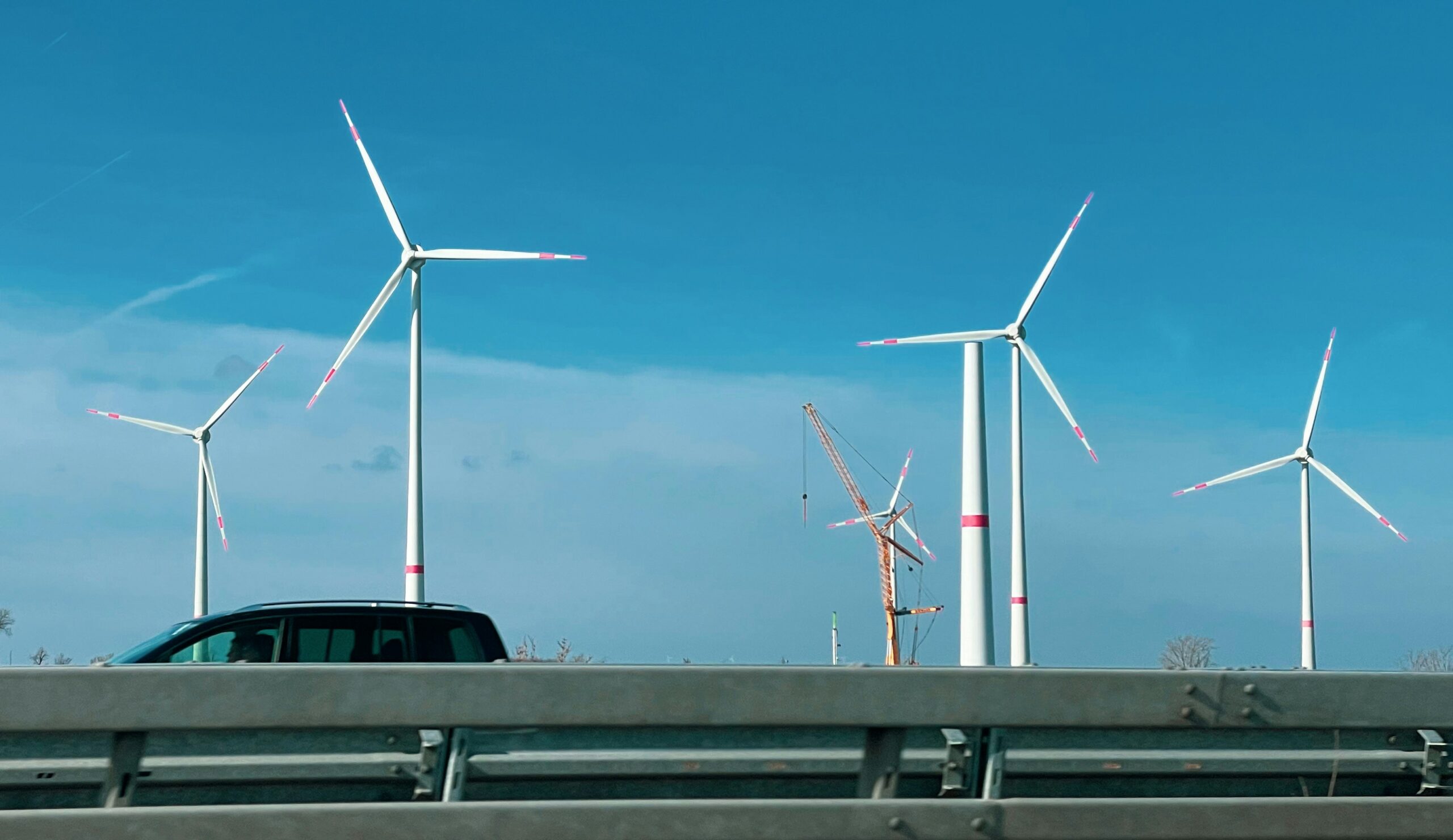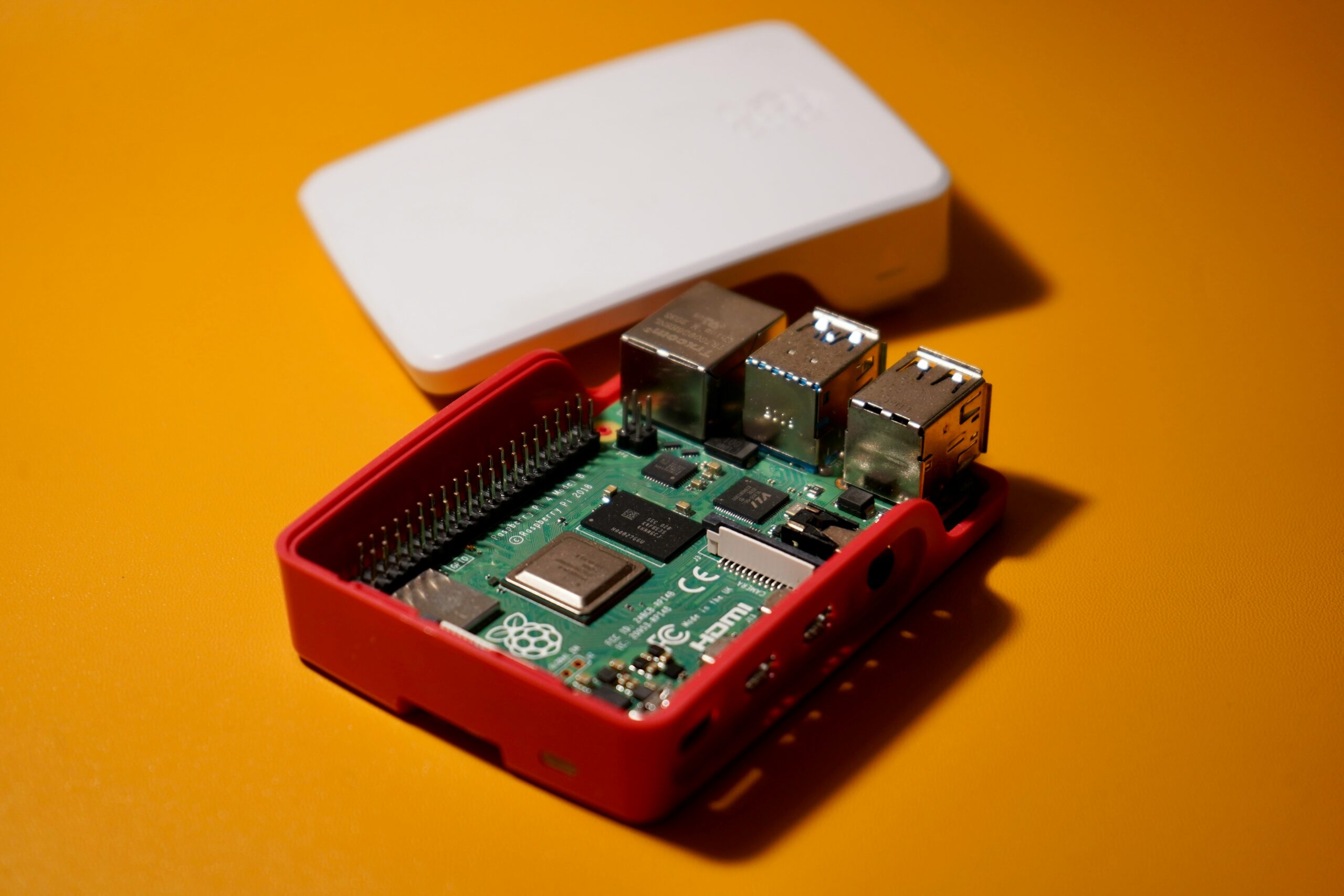Exploring the Intersection of Environment and Green Technology Solutions
 Photo by Bernd 📷 Dittrich on Unsplash
Photo by Bernd 📷 Dittrich on Unsplash Introduction: The Urgency of Environmental Concerns
In recent years, the escalating environmental concerns facing our planet have become increasingly apparent. Climate change, manifested through rising global temperatures, extreme weather events, and shifting ecosystems, poses one of the most pressing threats. Pollution, from industrial emissions to plastic waste in oceans, compounds the crisis by degrading air quality and endangering marine and terrestrial life. Furthermore, the loss of biodiversity, driven by habitat destruction, over-exploitation, and environmental pollution, disrupts ecological balance and diminishes the natural resilience of our environment. Deforestation, often linked to agricultural expansion and urban development, further exacerbates these issues by reducing carbon sequestration and disrupting vital ecosystem services.
Addressing these challenges requires a multifaceted approach that leverages innovative solutions. Green technology, encompassing everything from renewable energy sources to environmentally friendly manufacturing processes, offers a promising path forward. These technological advancements play a crucial role in promoting sustainability and minimizing human impact on the environment. For instance, renewable energy technologies such as solar, wind, and hydroelectric power provide cleaner alternatives to fossil fuels, reducing greenhouse gas emissions and reliance on limited natural resources.
Technological innovations in green technology also extend to improvements in energy efficiency, waste management, and sustainable agriculture. Energy-efficient appliances and smart grid technologies help reduce overall energy consumption while maintaining functionality and comfort. Advanced waste management solutions, including recycling programs and biodegradable materials, mitigate the impact of industrial and consumer waste on landfills and ecosystems. Sustainable agricultural practices, supported by precision farming technologies and organic farming methods, aim to optimize resource use while preserving soil health and biodiversity.
As the need for sustainable practices intensifies, the integration of green technology solutions becomes even more critical. By harnessing the power of technological advancements, we can develop and implement strategies that not only address environmental concerns but also pave the way for a more resilient and sustainable future. The intersection of environment and green technology offers a compelling narrative of hope and innovation in the face of one of humanity’s greatest challenges.
What is Green Technology?
Green technology, often referred to as clean technology, encompasses a broad range of practices and innovations aimed at mitigating environmental impact. Central to the concept are renewable energy sources, such as solar, wind, and hydro power. These alternatives to fossil fuels harness natural processes to generate electricity and reduce greenhouse gas emissions. Solar panels capture sunlight and convert it into energy, wind turbines harness wind power, and hydroelectric systems utilize the flow of water—each offering clean, sustainable energy solutions.
In addition to renewable energy, green technology includes energy efficiency improvements that optimize the use of existing resources. This involves advancements in building materials, smart grids, and energy-saving appliances, all designed to lessen overall consumption and reduce waste. Recycling and waste management solutions are also critical components. By transforming waste into reusable materials, these technologies help minimize landfill use and conserve raw materials.
Sustainable agriculture practices form another pillar of green technology, focusing on eco-friendly farming methods. Techniques such as crop rotation, organic farming, and permaculture aim to enhance soil health, reduce chemical usage, and increase biodiversity. These approaches not only preserve natural ecosystems but also ensure food security and improve the quality of life for farmers and consumers alike.
The principles underpinning green technology are multifaceted. Central to these is the goal of reducing environmental harm by minimizing pollution and conserving natural resources. Additionally, green technology strives to enhance the quality of life by promoting sustainable practices that are economically viable and socially equitable. The overarching aim is to create a balanced relationship between technological advancement and ecological preservation, ensuring that both present and future generations can thrive.
The Role of Renewable Energy
Renewable energy has emerged as a cornerstone of green technology, fundamentally transforming how we address environmental challenges. The deployment of renewable energy sources such as solar, wind, geothermal, and hydropower plays a significant role in reducing greenhouse gas emissions and decreasing our reliance on fossil fuels. These energy solutions not only contribute to environmental sustainability but also offer economic benefits by fostering the growth of new industries and creating green jobs.
The benefits of transitioning to renewable energy are manifold. Solar power, for instance, harnesses the energy of the sun using photovoltaic cells, providing a clean and abundant source of electricity. Wind energy, captured through turbines, is another potent alternative that has been harnessed successfully across various geographic locations. Geothermal energy leverages the Earth’s internal heat to generate power, offering a reliable and consistent energy supply with a minimal environmental footprint. Hydropower, utilizing flowing water to produce energy, has been a longstanding renewable resource that also aids in flood control and irrigation.
Successful case studies from around the world demonstrate the practicality and scalability of renewable energy projects. One notable example is the Ivanpah Solar Electric Generating System in California, which generates 392 megawatts of power, enough to serve over 140,000 homes annually. Similarly, Denmark’s Samsø Island has transitioned to 100% renewable energy, predominantly through wind power, illustrating the feasibility of large-scale adoption.
Technological advancements are central to the growth and scalability of renewable energy. Innovations in energy storage technologies, such as battery storage systems, enhance the reliability of solar and wind energy by addressing intermittency issues. Smart grid technologies further integrate renewable energy into the existing power grid, optimizing energy distribution and consumption.
In summary, renewable energy is not just an environmental necessity but a practical and forward-thinking solution that addresses multiple aspects of modern energy needs. The integration of advanced technologies continues to drive the adoption and efficacy of renewable energy, marking a pivotal shift towards a more sustainable and economically resilient future.
Energy Efficiency and Smart Technologies
As the world grapples with escalating environmental challenges, energy efficiency and the implementation of smart technologies stand out as vital solutions to reduce both energy consumption and environmental impacts. One of the significant innovations in this field is the development of smart grids, which streamline energy distribution by utilizing advanced communication technologies. These smart grids enable real-time monitoring and management of energy flow, ensuring that energy is distributed efficiently and losses are minimized. This not only reduces the carbon footprint but also enhances the reliability and resilience of energy systems.
Energy-efficient appliances are another critical component in this paradigm. Modern appliances are designed to use minimal energy while delivering optimal performance. From energy-efficient refrigerators to washing machines and air conditioners, these devices are equipped with advanced sensors and automation systems that adjust their energy use based on real-time needs. This not only lowers energy bills for consumers but also significantly decreases the overall energy demand on a macro scale, contributing to a sustainable environment.
Intelligent lighting systems represent yet another advancement in energy optimization. These systems use IoT sensors and automation to adjust lighting based on occupancy, daylight availability, and specific user preferences. By ensuring that lights are only used when necessary and at the appropriate levels, these systems significantly cut down on energy wastage and enhance the comfort and productivity of the occupants.
In the realm of sustainable building designs, architects and engineers are increasingly incorporating energy-efficient materials and technologies. Features such as high-performance insulation, energy-efficient windows, and passive solar design not only reduce the energy needed for heating and cooling but also improve indoor environmental quality. Incorporating renewable energy sources like solar panels and wind turbines further enhances the sustainability of these buildings.
The advent of automation, the Internet of Things (IoT), and artificial intelligence (AI) has markedly transformed energy usage across various sectors. In residential applications, smart thermostats, AI-powered energy management systems, and home automation networks allow precise control over energy consumption, leading to increased savings and sustainability. Industrially, AI-driven analytics and IoT-enabled machinery optimize operations, reducing energy waste and operational costs. In all cases, these technologies create a synergy that propels the vision of a greener and more energy-efficient future.
Sustainable Transportation Solutions
The transportation sector plays a critical role in global energy consumption and greenhouse gas emissions. Sustainable transportation solutions are imperative to mitigate the environmental impact of this sector. One of the foremost advancements in this area is the proliferation of electric vehicles (EVs). EVs provide a cleaner alternative to traditional internal combustion engine vehicles by utilizing electricity, ideally generated from renewable sources. This transition stands to reduce dependency on fossil fuels and substantially lower emissions. Noteworthy real-world examples include initiatives from companies like Tesla, Nissan, and Chevrolet, which have developed popular electric models contributing to this shift.
Beyond private transportation, public transport infrastructure is also experiencing significant green tech transformations. Modern electric buses and trains, driven by battery and grid systems, offer more energy-efficient and environmentally friendly public transportation options. Cities like Shenzhen have led by example by entirely electrifying their public bus fleet, resulting in reduced urban air pollution and noise. Additionally, upgrading rail networks to run on electricity rather than diesel fosters a cleaner mass transit system. These advancements significantly enhance urban mobility while concurrently addressing environmental concerns.
Alternative fuels also constitute a critical part of sustainable transportation. Biofuels, derived from organic materials like plant and animal waste, present a renewable fuel source that can be integrated with existing vehicle technologies. Companies are also exploring the potential of hydrogen fuel cells, which produce electricity through a chemical reaction between hydrogen and oxygen, emitting only water vapor and heat as byproducts. Toyota and Hyundai are two notable automotive manufacturers who have invested in hydrogen-powered vehicles, underlining this fuel’s potential to revolutionize the sector.
Emerging trends further underscore the commitment towards sustainable transportation. Integrated smart transportation systems, combining data analytics with real-time transit information, optimize route planning and reduce inefficiencies. Innovations in autonomous driving have the potential to further diminish carbon footprints, as automated systems can drive more efficiently than humans. Sustainable urban planning, promoting bicycle lanes and pedestrian-friendly areas, also highlights a holistic approach to reducing vehicular emissions. Together, these green technology solutions are paving the way for a sustainable future in the transportation sector.
Waste Management and Recycling Innovations
Effective waste management and recycling technologies are pivotal in mitigating environmental pollution and advancing towards a sustainable future. The implementation of advanced waste-to-energy technologies, for instance, represents a significant stride in reducing the volume of waste that ends up in landfills. These technologies convert organic waste into usable energy, offering dual benefits of waste reduction and energy generation. By converting waste into energy, cities can tackle two pressing issues – energy shortage and waste overload – simultaneously.
Innovative recycling methods have also emerged as a crucial component in the environmental management strategy. Techniques such as chemical recycling and advanced material recovery facilities are leading the charge in ensuring that high-value materials are not lost but recovered and repurposed efficiently. These methods go beyond traditional recycling by breaking down complex materials and converting them into their original forms, thus enabling the recycling of materials that were previously deemed non-recyclable.
The principles of the circular economy are becoming increasingly prominent among waste management strategies. These principles emphasize the importance of re-use, re-purposing, and designing products with their end-of-life in mind to ensure minimal waste. This holistic approach not only reduces waste but also promotes the sustainable utilization of resources. Cities worldwide are adopting these principles to create systems where waste is minimized, and resource recovery is maximized, leading to a more sustainable and environmentally friendly society.
Success stories abound in communities that have embraced these innovative waste management and recycling methods. For example, San Francisco has set an ambitious target of zero waste and has already achieved significant reductions in waste through rigorous recycling programs and waste-to-energy initiatives. Similarly, Sweden has become a global leader in waste management through comprehensive waste sorting and recycling practices, complemented by cutting-edge waste-to-energy technologies. These examples illustrate the potential of well-implemented waste management systems to contribute significantly to environmental sustainability.
The Impact of Green Technology on Economy and Society
Green technology significantly influences both economies and societies, fostering a symbiotic relationship where environmental sustainability drives financial and social well-being. One of the most conspicuous impacts is the creation of green jobs, which are pivotal in advancing a sustainable economy. Green jobs encompass roles in renewable energy sectors, energy efficiency, waste management, and ecological conservation, offering a multitude of employment opportunities. This sector not only stimulates job growth but also encourages innovation, leading to advancements in green technology.
From an economic perspective, integrating green technology can lead to substantial financial benefits. A sustainable approach often results in long-term savings by reducing energy consumption and minimizing waste. For instance, businesses that adopt renewable energy sources such as solar or wind power can significantly cut down on utility costs. Additionally, energy-efficient technologies and processes can enhance productivity while lowering operational costs. The shift towards a green economy isn’t just beneficial for individual businesses but also fortifies national economies by reducing dependence on imported fossil fuels and bolstering energy security.
Equally, green technology holds promise in addressing and potentially reducing social inequalities. Access to clean energy can transform communities, notably in rural or underserved areas where traditional energy infrastructure is lacking or inadequate. By deploying solar, wind, or other green energy projects, these communities can gain reliable electricity, thus improving education, health, and economic development. Moreover, the decentralization of energy production promotes equity by making remote areas less vulnerable to the monopolistic tendencies of traditional energy providers.
Another critical aspect of green technology is its role in promoting healthier living environments. Renewable energy solutions and technology that minimize pollution directly contribute to improved public health. Reduced emission levels from using cleaner energy sources can alleviate respiratory problems and other health conditions exacerbated by pollution. Furthermore, green infrastructures such as parks and green buildings create more livable and vibrant communities, enhancing the overall quality of life.
In summary, the positive impacts of green technology on the economy and society are manifold. By creating sustainable employment opportunities, driving economic prosperity, and bridging social inequalities, green technology stands as a powerful catalyst for achieving both environmental and societal goals. The pursuit of green solutions not only paves the way for a resilient economy but also fosters healthier, more equitable communities worldwide.
Future Trends and Innovations in Green Technology
Advancements in green technology hold significant promise for addressing environmental challenges. One of the most crucial developments is in renewable energy storage. Improved battery technologies and innovative energy storage systems, such as advanced lithium-ion batteries and emerging solid-state batteries, are enabling more efficient storage of solar and wind energy. These advancements make it feasible to maintain a steady supply of renewable energy, thereby reducing reliance on fossil fuels and minimizing carbon emissions.
Next-generation sustainable materials are another area of intense focus. Researchers are working on developing biodegradable plastics, sustainable concrete alternatives, and materials that utilize carbon capture. Biodegradable plastics, derived from biological substances instead of petroleum, present a key opportunity to diminish plastic pollution. In construction, carbon-negative concrete, which absorbs more CO2 than it emits, is set to revolutionize the industry by reducing the sector’s overall carbon footprint.
Biotechnology applications are also gaining traction as pivotal components of the green technology spectrum. Microbial fuel cells, bio-based solar cells, and genetically modified crops that require less water and chemical inputs are prime examples. Microbial fuel cells use bacteria to convert waste into electricity, offering a dual solution for waste management and energy generation. Bio-based solar cells, using organic materials, provide an eco-friendly alternative to traditional photovoltaic cells.
In the realm of carbon capture and sequestration, future breakthroughs could drastically alter the landscape of emissions control. Technologies like direct air capture and enhanced weathering processes are being refined to more efficiently remove CO2 from the atmosphere. Direct air capture involves chemically filtering carbon dioxide directly from air, while enhanced weathering accelerates natural geological processes to sequester carbon in solid form. These innovations are essential in combating climate change by addressing the root cause–excess atmospheric carbon.
Continuous innovation in green technology offers a pathway to a more sustainable and resilient planet. By incorporating advancements in renewable energy storage, developing sustainable materials, harnessing biotechnology, and refining carbon capture techniques, we can create a robust framework for environmental preservation and technological progress.





Tidak ada komentar